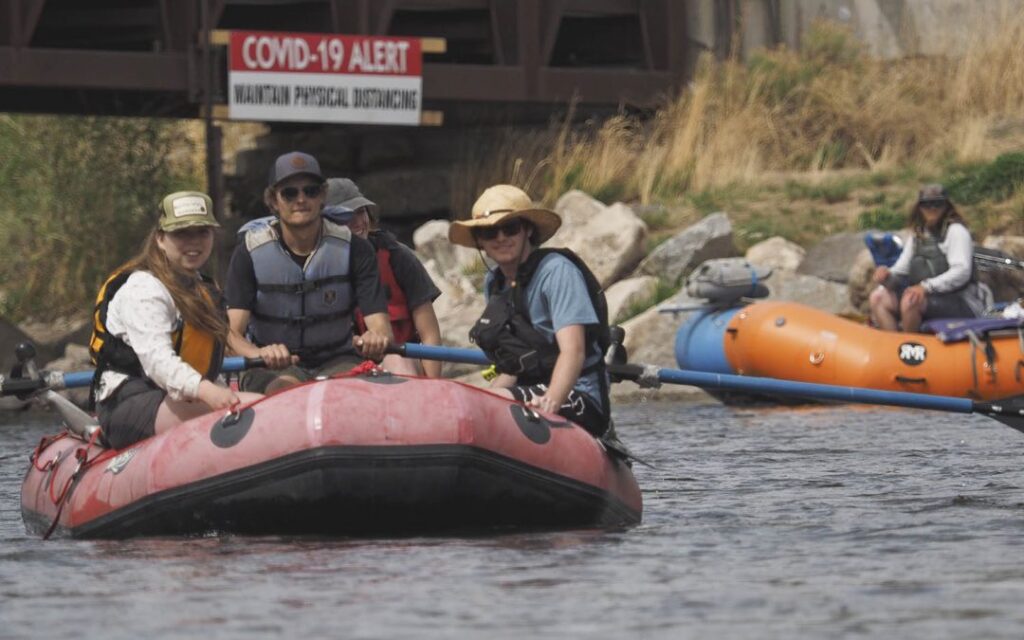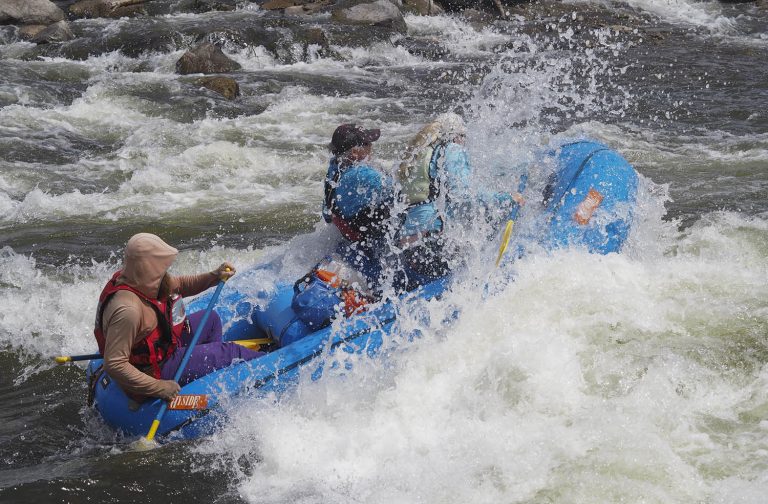
By Dean Krakel
With warming temperatures in Colorado’s mountains and spring runoff in full swing, the whitewater boating season should be off to a roaring start.
But Colorado’s stringent COVID-19 travel and recreation restrictions are forcing commercial rafting companies to create social distance on unruly rivers and face the potential for smaller crowds.
“The snowpack’s in good shape,” said John Kreski, rafting coordinator for Colorado Parks and Wildlife’s Arkansas River Headwaters Area. “But the phones aren’t ringing. This is very frustrating.”
Colorado’s highest flows, as of mid-May, are in the northern part of the state, with the Poudre and North Platte at 100 to 120 percent of normal, according to Aldis Strautins, a hydrologist for the National Weather Service in Grand Junction.
The upper Colorado, Gunnison, Green and lower Colorado rivers are all flowing at between 70 to 80 percent of normal, while the Arkansas River, from Buena Vista to the Royal Gorge, is flowing at 80 percent of normal.
Because of an unusually warm and dry April, flows are trending downward in the central and southern mountains.
The South Platte River and Clear Creek are running at 64 to 70 percent of normal, while the Rio Grande and San Juan River are just 45 percent of normal.
Northern Colorado rivers, such as the Poudre, will have enough snowmelt to extend flows for boating into late summer. Elsewhere in the state the best floating will occur from May into early July. “Get down into that 70 to 75 percent and you’re looking at a reduced season,” Strautins said. “There’s just not enough snow to extend it.”

Hoping to maximize the early season flows, outfitters are anxiously waiting to see how many visitors will show, according to Bob Hamel, executive director of the Arkansas River Outfitters Association, a trade group.
“Who’s going to travel? Who’s got money? Will we even be traveling or flying to destinations?” he asked.
Still, Hamel is hopeful that the state’s waterways can be opened for commercial use by early June, bringing some much-needed economic activity to the state.
Colorado’s rafting industry is the No. 2 contributor to the state’s recreation economy, behind skiing. Centered on the Colorado, Rio Grande, Arkansas and Platte rivers, it contributed nearly $188 million to the state’s economy, according to a report of the Colorado River Outfitters Association. Visitors spent an average of $135 on a river adventure, including food, lodging, gas and souvenirs.
These numbers don’t include hundreds of homegrown rafters and kayakers who recreate on Colorado’s rivers or the large numbers of boaters from out of state that bring their own gear to the hallmark waterways.
How COVID-19 will impact the industry this summer isn’t clear yet, though major changes are underway.
“Every river floating company will have to adapt their own safety procedures to the kind of trips that they offer,” said Hamel. “A half-day trip down the Taylor River can’t be handled the same as a multi-day trip down the Gunnison Gorge. Some rafts are bigger. Some are smaller. The rafting industry can’t do a one size fits all.”
One set of COVID-19 rafting guidelines developed by Mark Schumacher, owner of Three Rivers Resort in Almont, Colo., includes daily screening of employees, non-touch guest check-in, and hand sanitizer in all office and retail areas.
In addition, directional signs will guide visitors to wherever they need to go, with group size monitored by employees. The number of people on a raft will be reduced to maintain proper social distancing, with spaced seating and open windows on vans and shuttles, disinfection of equipment after each use, and instructions to clients to bring their own water bottles and food.
Andy Neinas, a river running veteran with Echo Canyon Outfitters in Cañon City, said the rafting industry is well-equipped to handle the COVID-19 restrictions.
“All of us are juggling things to make it all work. We’re going to being doing it differently, but nobody does it better than Colorado,” Neinas said.
Dean Krakel is a photographer and writer based in Almont, Colo. He can be reached at dkrakel@gmail.com.
Fresh Water News is an independent, nonpartisan news initiative of Water Education Colorado. WEco is funded by multiple donors. Our editorial policy and donor list can be viewed at wateredco.org.
This story originally appeared on Fresh Water News on May 20, 2020.





